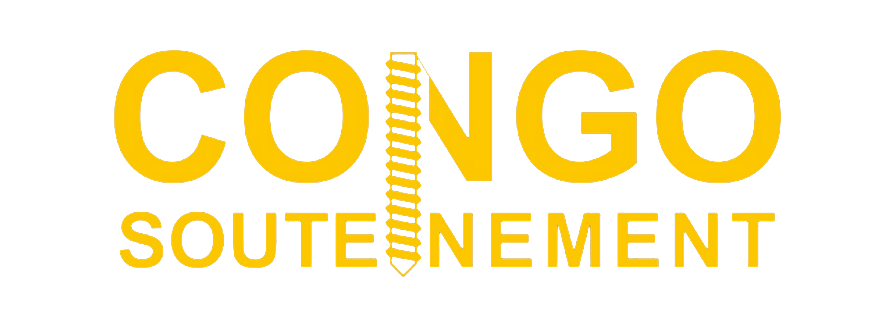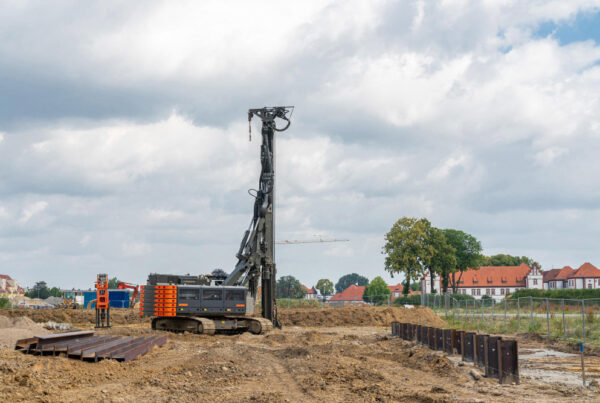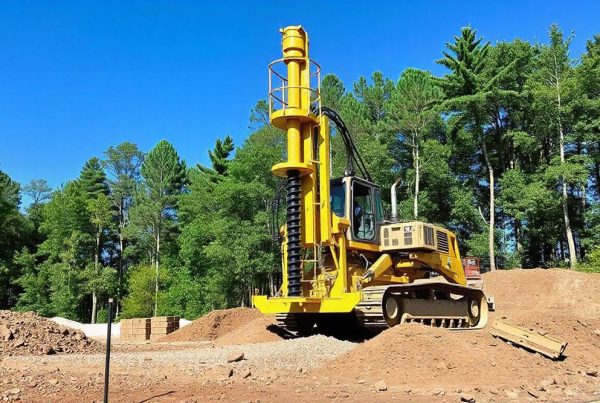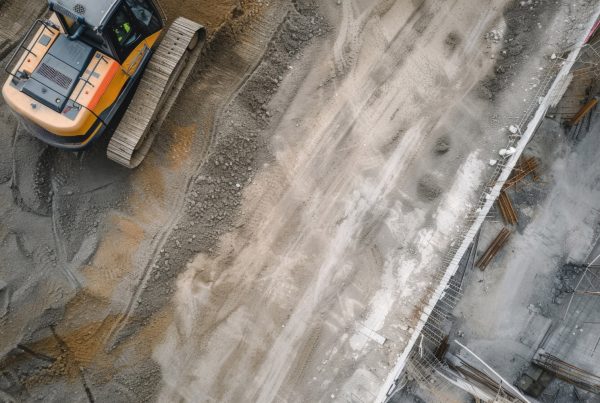Continuous Flight Auger (CFA) piles have gained widespread adoption in modern construction due to their high efficiency and reduced environmental impact. Unlike traditional piling methods, Continuous Flight Auger (CFA) piles are installed by drilling a continuous auger into the ground, eliminating the need for temporary casing or support. Once the target depth is achieved, concrete is pumped through the hollow stem of the auger, and reinforcement is placed into the fresh concrete. Several innovative techniques are now being used to enhance the performance and sustainability of Continuous Flight Auger (CFA) pile installations, which we will explore in this article.
1. Advanced Drilling Equipment
The advancement of drilling rigs has revolutionized CFA pile installation. Modern drilling rigs now come equipped with automated systems and sensors, enabling precise drilling with minimal human intervention. These rigs can adjust to variations in soil conditions and depths, optimizing the installation process. Additionally, the automation helps maintain consistency across piles, improving both speed and accuracy. The ability to monitor drilling angles, torque, and depth in real time provides invaluable feedback to ensure the pile’s structural integrity.
2. Use of Real-Time Monitoring Systems
One of the most significant innovations in CFA pile installation is the use of real-time monitoring systems. These systems track crucial metrics such as auger depth, concrete pressure, rotation speed, and pile integrity. By receiving continuous feedback during installation, operators can make on-the-fly adjustments, ensuring piles meet load-bearing and safety requirements. The data collected is also stored and analyzed for quality control, allowing project managers to track performance metrics, reduce risks, and address potential problems proactively. Real-time monitoring also ensures compliance with stringent safety and environmental regulations.
3. Eco-Friendly Concrete Mixes
Environmental sustainability is becoming increasingly important in construction, and CFA pile installation has not been left behind. Many projects are now incorporating eco-friendly concrete mixes that include recycled materials such as fly ash and slag. These materials not only help reduce the carbon footprint but also improve the strength and durability of the piles. High-performance concrete can increase the load-bearing capacity of piles, extend the life of structures, and minimize maintenance costs. Eco-friendly CFA pile installations are playing a key role in green construction initiatives, aligning with global sustainability goals.
4. Auger Cleaning and Reuse Techniques
In conventional CFA pile installations, the auger is often cleaned manually, a time-consuming process that can slow down operations. Recent innovations have introduced automated auger cleaning systems that clean the auger during withdrawal from the ground. This technique reduces project downtime, increases efficiency, and ensures consistent performance across multiple installations. Additionally, the reuse of augers in multiple piles reduces the cost of equipment wear and extends the life of drilling tools.
5. Hybrid Piling Techniques
Hybrid techniques that combine CFA piles with other piling methods have also emerged as a practical solution for complex projects. For example, CFA piles can be used in conjunction with driven piles to address varying soil conditions on the same site. This hybrid approach allows engineers to optimize the foundation design, ensure the stability of the structure, and reduce the overall cost. By using CFA piles in conjunction with other methods, projects can achieve the best of both worlds—efficiency and adaptability in challenging environments.
6. Improved Reinforcement Techniques
Reinforcement plays a crucial role in the strength and durability of CFA piles. New techniques have been developed to improve the placement and alignment of reinforcement within the piles. These techniques include prefabricated reinforcement cages that can be inserted into the pile with precision. These cages ensure uniform distribution of steel bars throughout the pile, increasing load-bearing capacity and resistance to bending. Innovations in reinforcement not only improve structural performance but also reduce labor time and associated costs.
7. Noise and Vibration Reduction
One of the key advantages of CFA piles is their relatively low noise and vibration levels compared to other piling methods. Innovations in auger design and drilling techniques have further reduced the environmental impact of CFA pile installations, making them suitable for urban areas or sensitive environments. New noise-reduction technologies applied to drilling rigs, along with vibration-dampening mechanisms, have made CFA piles an ideal choice for construction projects close to existing infrastructure or residential areas.
8. Integration with Digital Construction
Digital technology is increasingly being integrated into CFA pile installation through the use of Building Information Modeling (BIM) and other digital construction tools. By using 3D models and simulations, engineers can plan the exact location, depth, and load-bearing capacity of each pile before construction begins. This minimizes errors and ensures optimal resource use. The use of drones, GPS tracking, and other digital tools to monitor CFA pile installations also increases accuracy, reduces costs, and enhances project transparency.
Conclusion
Innovative techniques in CFA pile installation have transformed the way foundations are built, making the process faster, more accurate, and environmentally friendly. Advanced drilling equipment, real-time monitoring, eco-friendly materials, and automation have all contributed to making CFA piles a preferred option in modern construction. As the industry continues to evolve, these innovations will help shape the future of foundation engineering, offering greater performance and sustainability for construction projects around the world.






